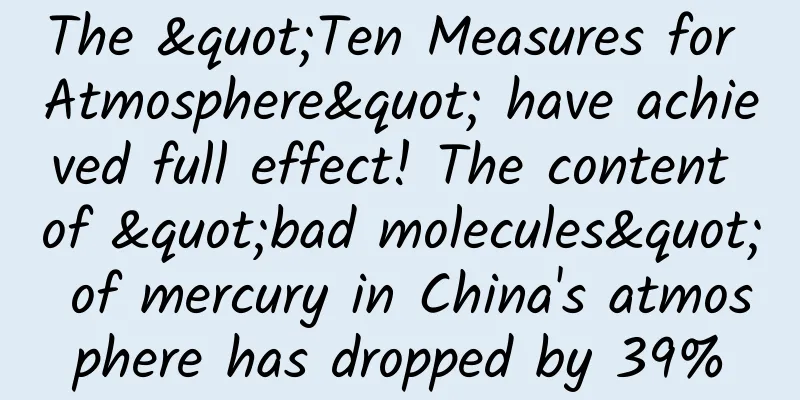Memory/SSD prices are skyrocketing! Will there be no price reduction this year?

|
At the beginning of the new year, among all DIY hardware, memory took the lead in launching a crazy price increase mode, which exceeded market expectations. At the same time, the price of SSD solid state drives also followed suit, making the storage market the focus of recent DIY field attention. In the past 2016, the entire DRAM and flash memory industry was shrouded in price increases and shortages. What is the root cause of these problems? What changes will the SSD/memory market usher in in 2017? How long will the price increase and shortage continue? Today, let's talk about the storage price increase. Memory price increase: an annual "period"? The price increase of memory is nothing new, because in the past few years, the memory market seems to be playing hide-and-seek, with irregular rise and fall. It can be so cheap that people wonder if they are buying fake memory? It can be so high that people wonder if the memory manufacturers are maliciously raising the price, just like real estate speculation. If you look carefully at the memory market in recent years, you will find a wavy line: around 2012, the price was very cheap, in 2013 the price rose sharply, in 2014 it fell back, in 2015 it reached a low point, in 2016 it continued to rise, in 2017... In 2017, in less than a month, the overall price of memory rose by more than 18%, a price increase that has not been seen in many years. DDR4 memory price Taking the HyperX Fury DDR4-2400 8G single stick, which is one of the best-selling products on JD.com, as an example, let's take a look at its price trend chart in the past six months (starting from August 2016). On JD.com, HyperX Fury DDR-2400 8G single stick is currently the best-selling product. According to the price trend chart in the past six months, the price was only 289 yuan in August last year. At that time, everyone thought it was expensive and looked forward to the annual Double 11 promotion. However, on 11.11, the price was as high as 339 yuan, and then it has soared to 479 yuan today, an increase of more than 65%. The price of dual-channel 8Gx2 DDR4-2400 memory has also risen, from the initial 500 yuan to 799 yuan today, increasing the cost of purchasing the computer for users who want to upgrade to larger memory capacity. Users who pursue high frequencies are even more distressed. For example, the price of the Galaxy Hall of Fame DDR4-3600 high-frequency memory kit has increased from the lowest price of 999 yuan to 1199 yuan, an increase of 200 yuan. Currently, DDR4 memory of different capacities, frequencies, brands, and models are all increasing in price, and the increase has hit a record high in recent years. The key is that this trend will continue, and there is no market signal that memory prices will fall in the near future. DDR3 memory price Currently, DDR4 memory is the main force in the market, and DDR3 memory is gradually withdrawing. However, due to Intel's toothpaste-like upgrades, users lack the motivation to switch to new platforms, and upgrading old platforms is a wise choice. Therefore, the attention paid to the price of DDR3 memory is no less than that of DDR4 memory. For example, the price of a classic ADATA DDR3 1600 8G memory stick, which has good sales on JD.com, has increased from 238 yuan to 359 yuan today, an increase of more than 50%. I remember that I bought this memory stick for 169 yuan in 2012 and used it until 2017. If I buy it second-hand, I can earn double the price. In terms of value retention, memory is not inferior to gold. SSD price increase: once it rises, it will return to the pre-liberation era In recent years, compared with the volatility of memory prices, the prices of SSD solid state drives have generally fallen. In the past, SSDs were only available to a minority due to their high prices, but the popularity of TLC flash memory has lowered the cost of SSDs, making them increasingly cheaper. From 2015 to the first half of 2016, the price of 120G/240G SSDs once dropped to 299 yuan/399 yuan, and many 512G SSDs were as low as 599 or 699 yuan. Many prognosticators have concluded that as SSD prices continue to fall, they will completely replace HDDs. However, popularization encountered resistance. Starting from the second half of 2016, the price of SSDs increased across the board, and the increase continued to exceed market expectations, causing many users who were still on the sidelines to sigh that they should have bought them early. Judging from the price trend chart of Kingston UV400 120G, the price was as low as 296 yuan in August 2016, and has now risen to 369 yuan, an increase of 73 yuan, or 24%. 240G/256G capacity is no exception. For example, the price of Samsung 750 EVO 250G has risen a bit outrageously in the past six months, from the lowest price of 439 yuan to 619 yuan, an increase of 180 yuan, a 41% increase. SSDs of different capacities, models, brands, and interfaces are all following the trend and rising. This wave of market continues to rise, and there is no sign of a decline in the short term. What causes the sharp rise in memory prices? Upstream DRAM memory chip prices soar The latest statistics from DRAMeXchange, a memory industry observer, show that the negotiated price of DRAM has broken through the highest point in the past 18 months. Only one month into 2017, the negotiated price of 4Gb DDR4 memory chips has risen from $2.837 to $3.347, an increase of 18%! And this is only the price of raw materials of the chips from upstream manufacturers. The intermediate memory controller, PCB board and assembly costs are gradually rising. It is conceivable that when a finished memory product is born, its retail price will increase greatly. DRAM chips are in serious shortage Price increases are always inseparable from the supply and demand relationship in the market. Obviously, this is the main reason for the price increase of memory. Why are DRAM particles out of stock? Due to the sluggish memory market, slow upgrades and weak market demand, major DRAM memory manufacturers currently have no plans to increase production, and have shifted their main production capacity to produce 3D NAND flash memory, resulting in a shortage of DRAM memory supply and demand. Insufficient production capacity due to replacement DDR3 memory has been in service for 8 years since 2007. Compared with Intel's pace of upgrading, the development of memory is quite slow. DDR4 was launched on a small scale in 2015, and it was not until 2016 that it was really rolled out to the market on a large scale. Compared with DDR3, DDR4 memory is very different. The voltage, timing, frequency and even the gold fingers are different. Factories switched from DDR3 to DDR4 memory production, which is bound to cause temporary pressure on production capacity. Guess there is an invisible hand In the global DRAM memory chip market, Samsung, SK Hynix, and Micron have already shown a three-way split, with Samsung having an absolute advantage in terms of technology, production capacity, and market share. After being the first to mass-produce 20nm DRAM technology in 2014, Samsung is now leading again and has already mass-produced 18nm DRAM. According to Korean media reports, Samsung converted 70% of its DRAM production capacity to 20nm last year, and now has entered the 18nm era, further expanding its leading advantage. In contrast, SK Hynix will only mass-produce 18nm DRAM early next year, while Micron is still on the road to 20nm. It is reported that Samsung is one of the main drivers of this wave of DRAM memory price increases. Currently, more than 70% of Samsung's chip production capacity has been divided up by Apple/its own mobile phones and mainland OPPO/Vivo, and the supply to other brands is very limited. At the same time, part of the production capacity has been transferred to the production of the fastest growing 3D NAND flash memory, further compressing the space for DRAM production. Market supply and demand determine that Samsung has the ability and qualifications to lead price adjustments. Some foreign media comments pointed out that this move may be Samsung's way of making up for the losses caused by the discontinuation of its Note 7 mobile phone. Of course, as terminal manufacturers, major memory manufacturers such as Kingston, ADATA, G.SKILL, and Corsair also hope that the price of memory will be raised. After all, the cheap memory comes out every year, and the memory manufacturers have to "eat grass" every year. Some time ago, a high-end memory brand was facing the risk of capital chain rupture and corporate bankruptcy. It can be seen that the life of memory manufacturers is not easy, and they will definitely not miss the opportunity to raise prices. The reasons behind the SSD price increase: different paths lead to the same result Like memory, the cost of SSD mainly comes from chips, except that DRAM is replaced by NAND flash memory. Currently, there are only a few manufacturers that can produce NAND chips, and Samsung, Intel/Micron, Toshiba, SanDisk, and Hynix almost monopolize more than 90% of the global market. Now it is facing the transition from 2D NAND to 3D NAND. Except for Samsung and Micron, which are more mature, the yield rate of 3D NAND from other companies is not very high, and the mass production is seriously insufficient, resulting in insufficient total NAND particle shipments, and the supply cannot meet market demand. The major SSD manufacturers are competing for the already insufficient flash memory particles, and will inevitably raise the NAND factory price in the competition. The final cost increase will be borne by consumers. On the other hand, the impact of mobile phones is also relatively large. In the past 2016, the capacity of mobile phones almost doubled, reaching up to 256GB. The flash memory chips used in the ROM of mobile phones and the flash memory chips in SSDs are produced from the same source. The surge in shipments of large-capacity mobile phones quickly consumed the flash memory chips that were originally insufficient in production capacity. SSD solid-state drives were the first to be affected. Memory/SSD price regression prediction: Memory: Currently, the market of DRAM particles continues to rise, which is far less optimistic than that of NAND flash memory. Samsung, Micron and other giants have stated that they have no plans to increase DRAM production and will invest more energy in 3D NAND manufacturing, which will further aggravate the situation of DRAM supply exceeding demand. This situation will lead to a continued rise in memory prices. The author predicts that in the first quarter of this year, memory prices will hit a high point. For example, a single DDR4-2400 8G memory stick still has room for an increase of about RMB 100, and a DDR4-2400/2800 8Gx2 package still has room for an increase of RMB 100-200. There is no room for prices to fall this year. If you want to buy memory in the near future, you should hurry up, as prices will continue to rise. SSD: The situation of SSD is better than that of memory. 2017 is the first year of popularization of 3D NAND. Once the technical bottleneck is broken and the yield rate is improved, 3D NAND will be supplied to the market on a large scale. Toshiba, SanDisk, Hynix and other manufacturers have released positive signals. This moment will not be too far away, so the days of SSD solid-state drives facing a shortage of "cores" will not be too long. Western Digital announced yesterday that it has started trial production of its lower-cost 64-layer 512Gb TLC NAND chips, which means that the prices of 250G, 500G and TB-level large-capacity SSDs are expected to drop significantly in the future. SSDs are in the process of becoming more popular, so there is a lot of room for prices to fall. In summary, I believe that SSDs will have an upward trend in the near future, but they will not remain in an upward trend throughout the year. Users who want to buy SSDs now may wish to wait and see. As a winner of Toutiao's Qingyun Plan and Baijiahao's Bai+ Plan, the 2019 Baidu Digital Author of the Year, the Baijiahao's Most Popular Author in the Technology Field, the 2019 Sogou Technology and Culture Author, and the 2021 Baijiahao Quarterly Influential Creator, he has won many awards, including the 2013 Sohu Best Industry Media Person, the 2015 China New Media Entrepreneurship Competition Beijing Third Place, the 2015 Guangmang Experience Award, the 2015 China New Media Entrepreneurship Competition Finals Third Place, and the 2018 Baidu Dynamic Annual Powerful Celebrity. |
>>: The best Android system ever: Talking about the past and present of CyanogenMod
Recommend
A brief talk about user operations, my AARRR model!
1. Start by reconstructing the AARRR model After ...
How to grow vegetables in space?
Seeing the "Shenzhou 13" spacecraft car...
Wang Xuehong is obsessed with VR: HTC CEO may fall into industry misunderstanding
At the recently concluded MWC2016, VR once again ...
How much does it cost to develop a Heyuan real estate mini program? What is the quotation for developing Heyuan real estate mini program?
The factors affecting the quotation of Heyuan Rea...
Summary of GuangDianTong delivery and optimization, practical experience at the million-level!
In this article, the author will share with you s...
What are the functions of Foshan check-in mini program? How to create a check-in app on WeChat?
A few days ago, a boss called me and wanted to mak...
The explosion of the “hydrogen balloon” is horrifying, but middle school physics and chemistry knowledge tells you that hydrogen is not to blame!
On New Year's Eve, December 31, 2024, a video...
Taobao Double 11 live broadcast case analysis
Recently everyone has been discussing that "...
With today’s headlines advertising, how to plan creative advertising for the wedding industry?
The threshold for entering the current marriage a...
How much does it cost to join the Shangluo Coupon Mini Program? What is the price for joining the Shangluo Coupon Mini Program?
How much does it cost to join a coupon mini progr...
2019 Spring Festival Information Flow Marketing Analysis Report!
The 2019 Spring Festival is approaching. As we al...
How much does it cost to develop a fast food app in Nagqu?
WeChat Mini Program is an application that users ...
It is said that product and marketing experts all "understand human nature". How can you do that?
After working in the product and marketing fields...
First appearance in Huizhou! The "most mysterious bird in the world" is here
Science Fiction Network reported on April 13 (Qin...
How effective is Momo advertising? Explanation of Momo advertising!
In the past two years, mobile Internet has been e...









